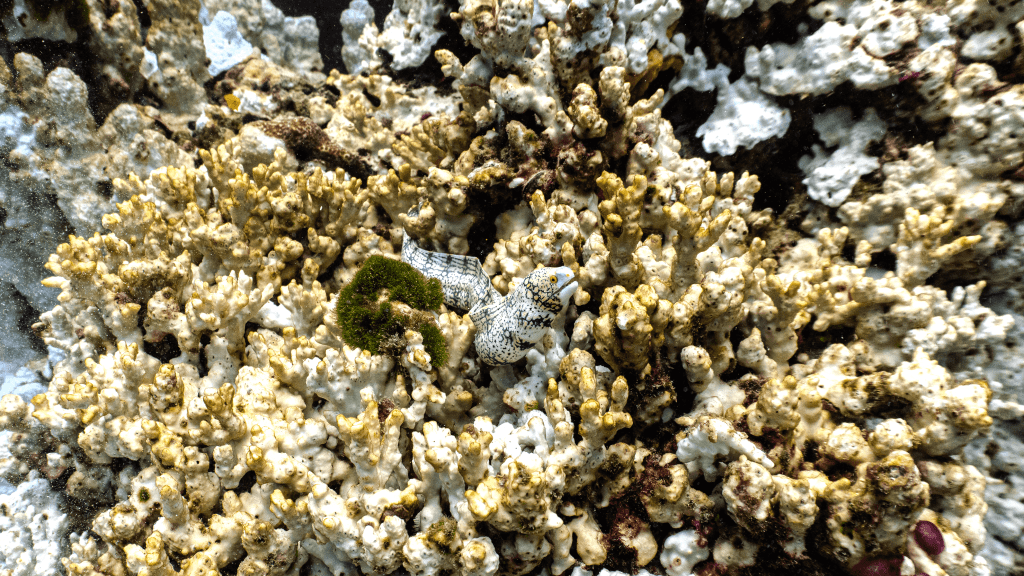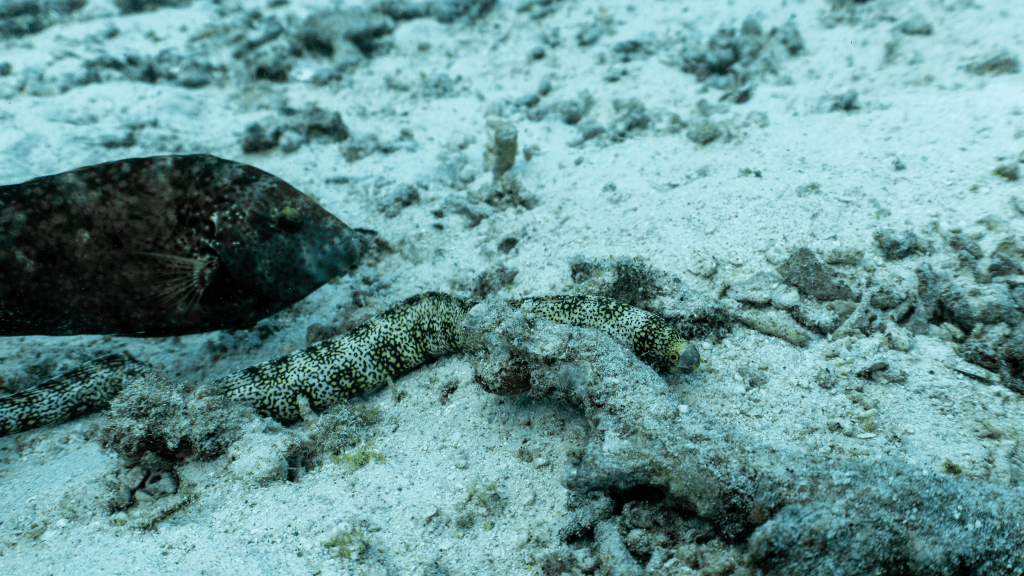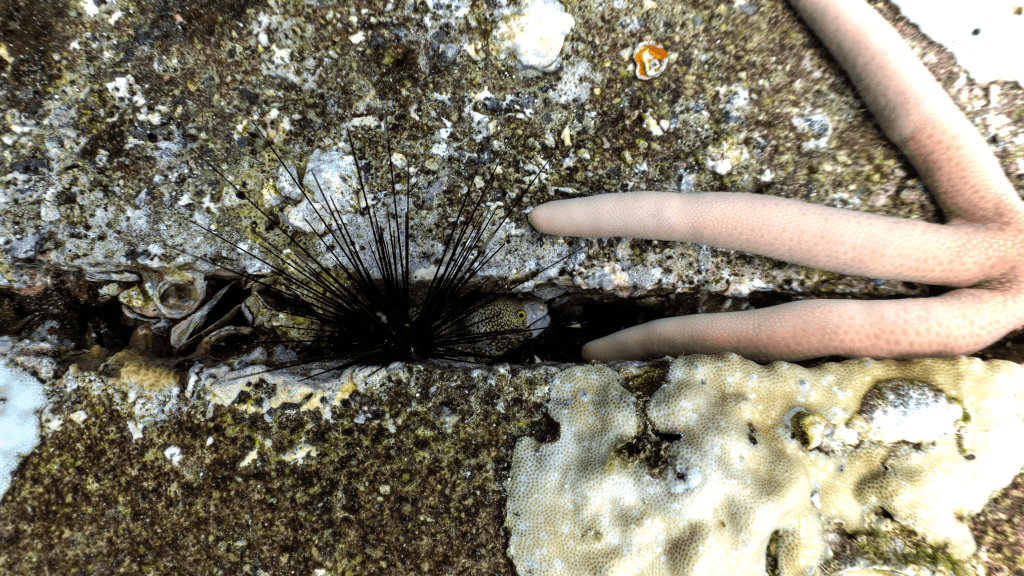Snowflake moray
Snowflake moray
The Snowflake moray (Echidna nebulosa), also known as the Clouded moray, is a species of marine moray eel from the Muraenidae family.
Its Hawaiian name, 'puhi-kapa,' originates from a nickname given by King Kamehameha I. The genus name comes from the Greek word 'echidna,' meaning 'viper,' and the species name 'nebulosa' comes from the Latin 'nebulosus,' meaning 'misty' or 'cloudy'.

The Snowflake moray can reach sizes up to 100 cm, but they are typically found around 50 cm in length. These fish inhabit depths ranging from 1 to 48 meters.
Snowflake morays inhabit caves and crevices of reefs in the Indo-Pacific region, from the Hawaiian Islands to Australia, extending westward through the Indo-Pacific islands to the East Indies, and across the Indian Ocean to the coast of Africa.

Their body is white or cream-colored with black dendritic or snowflake-like spots, sometimes with yellow dots. The moray's eyes are yellow, and yellow markings are visible on the head. Two yellow tubular anterior nostrils protrude from the snout, directed downward, with another pair (posterior nostrils) closer to the eyes. Their vision is poor, but they compensate with a well-developed sense of smell (olfaction). The teeth of the Snowflake moray are adapted for eating crustaceans, and their conical shape helps crush the exoskeletons of invertebrates. In the wild, these morays typically feed mostly on fish.
Sexual differences in morays are not pronounced. They are protandrous, meaning that a more dominant individual can change sex from female to male. [Note: This statement contains a contradiction. Protandry means male-to-female change; the description fits protogyny (female-to-male). Sex change type in this species may not be well-established]. This can cause issues, as morays are generally peaceful. The process of sex change can take from several months to a year.
Snowflake morays play an important role in dispersal through the eggs they release into the water during spawning. Their eggs and larvae drift with the plankton until they settle on the reef, where hatching occurs. [Note: Hatching typically occurs in the plankton before settlement].
